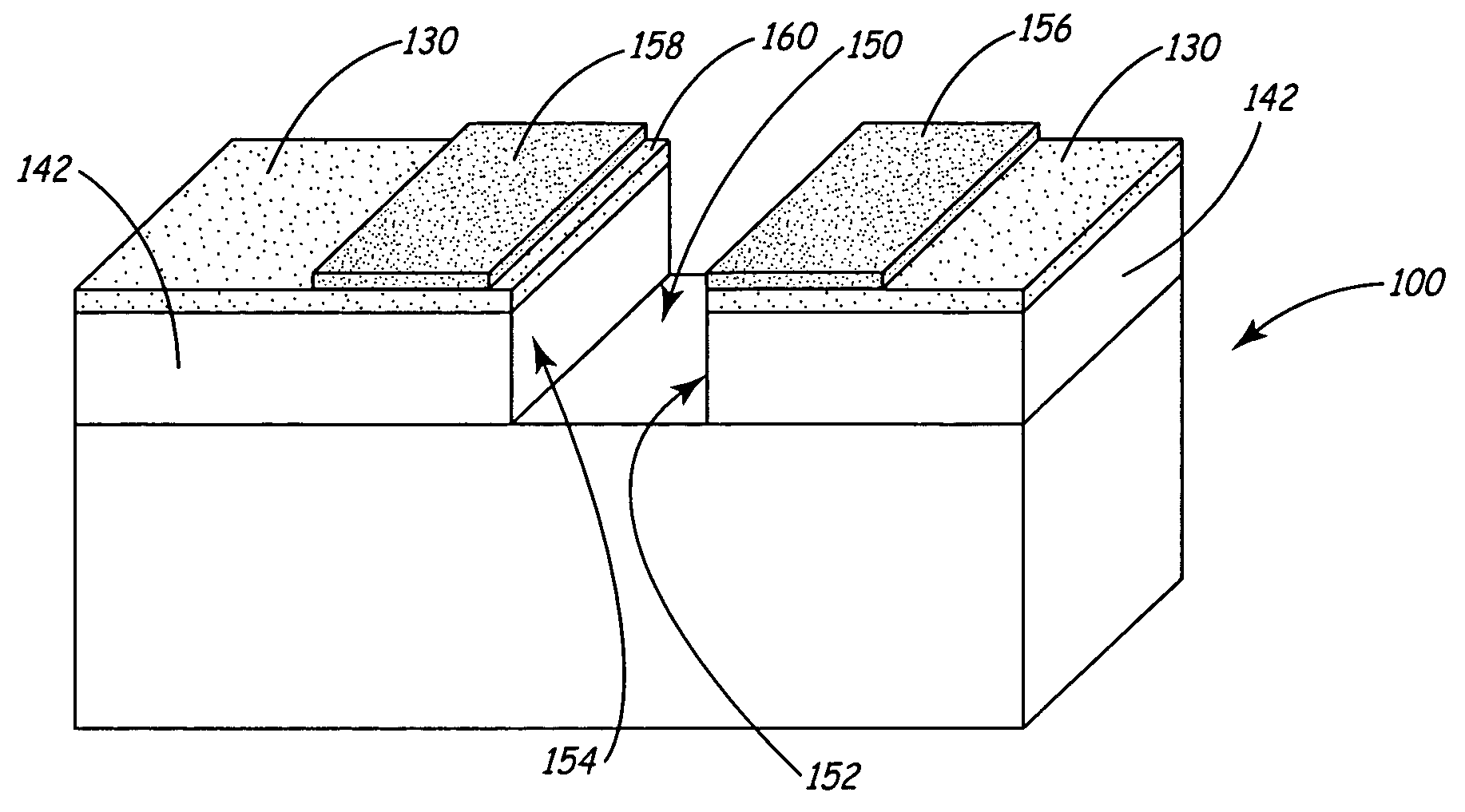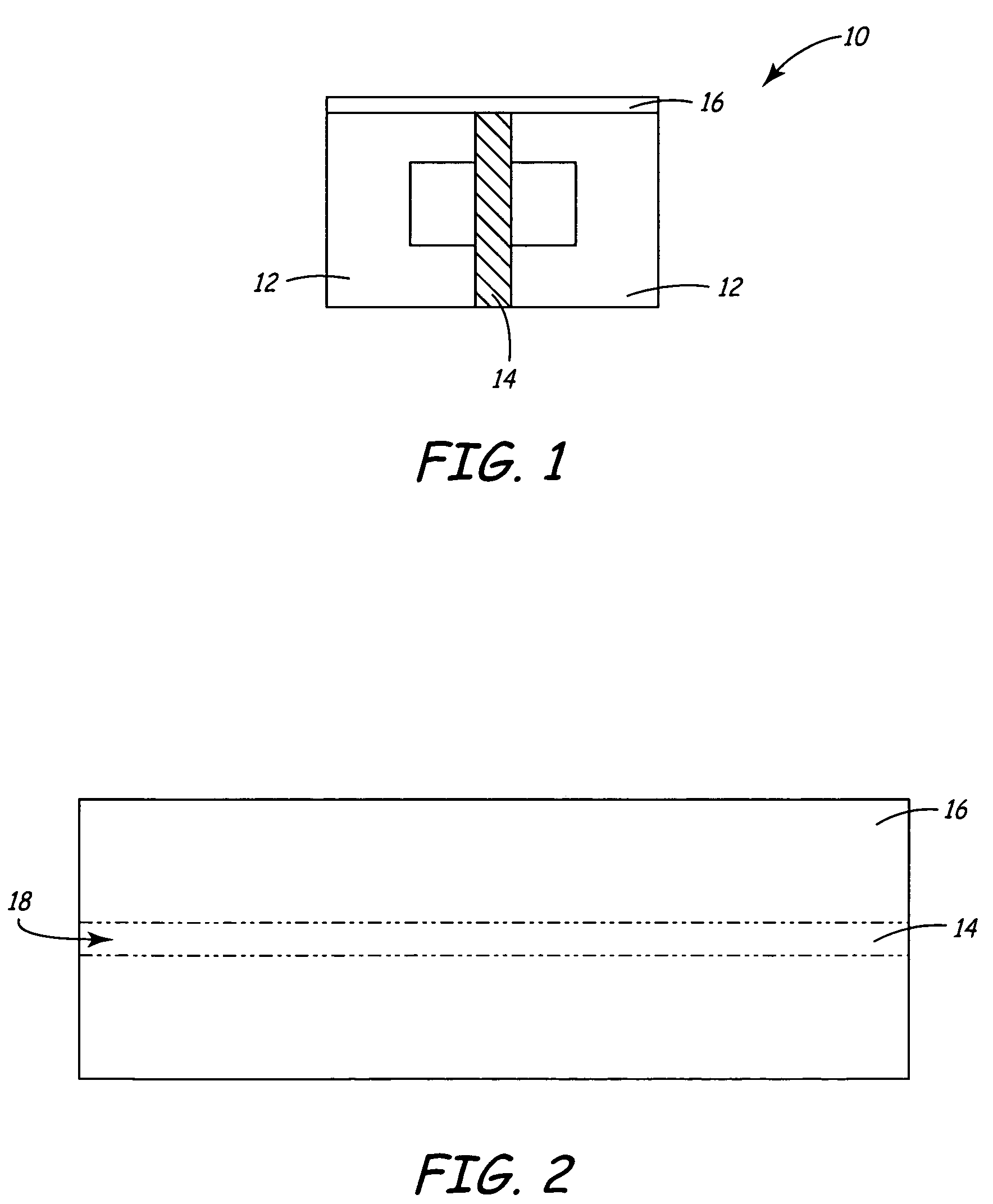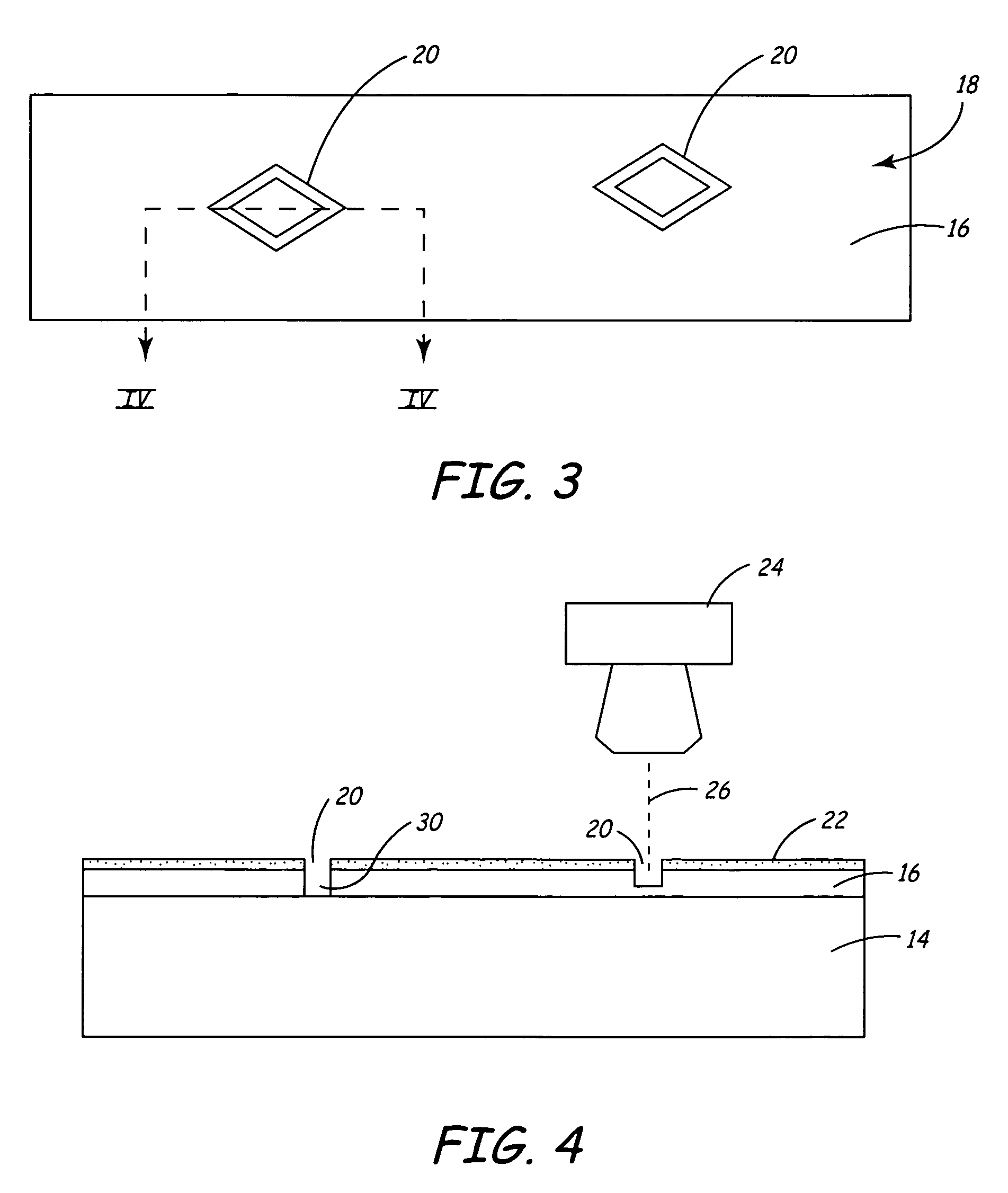Double layer patterning and technique for milling patterns for a servo recording head
a technology of patterning and servo recording head, which is applied in the direction of manufacturing head surface, maintaining head carrier alignment, and ensuring track following on tape, etc., can solve the problems of deterioration of tape and head, inability to provide a separate read head, and producing a relatively dirty environmen
- Summary
- Abstract
- Description
- Claims
- Application Information
AI Technical Summary
Benefits of technology
Problems solved by technology
Method used
Image
Examples
Embodiment Construction
[0054]The present invention is a method of making a thin film magnetic recording head using a focused ion beam (FIB) to mill out gaps in the tape bearing surface. Referring to FIG. 1, a substrate 10 is created by glass bonding two C-shaped ferrite blocks 12 to a medially disposed ceramic member 14. The sizes and relative proportions of the ferrite blocks 12 and ceramic member 14 may vary as dictated by the desired parameters of the completed recording head. Furthermore, the choice of materials may also vary so long as blocks 12 remain magnetic while member 14 remains generally magnetically impermeable.
[0055]A layer of magnetically permeable material is deposited as a thin film 16 across an upper surface of each of the ferrite blocks 12, as well as the upper surface of the ceramic member 14. The magnetically permeable thin film 16 will become the tape bearing and data writing surface for the magnetic head 5 (see FIGS. 12 & 13). As such, it is desirable to form the layer of thin film ...
PUM
| Property | Measurement | Unit |
|---|---|---|
| thickness | aaaaa | aaaaa |
| thickness | aaaaa | aaaaa |
| area | aaaaa | aaaaa |
Abstract
Description
Claims
Application Information
 Login to View More
Login to View More - R&D
- Intellectual Property
- Life Sciences
- Materials
- Tech Scout
- Unparalleled Data Quality
- Higher Quality Content
- 60% Fewer Hallucinations
Browse by: Latest US Patents, China's latest patents, Technical Efficacy Thesaurus, Application Domain, Technology Topic, Popular Technical Reports.
© 2025 PatSnap. All rights reserved.Legal|Privacy policy|Modern Slavery Act Transparency Statement|Sitemap|About US| Contact US: help@patsnap.com



